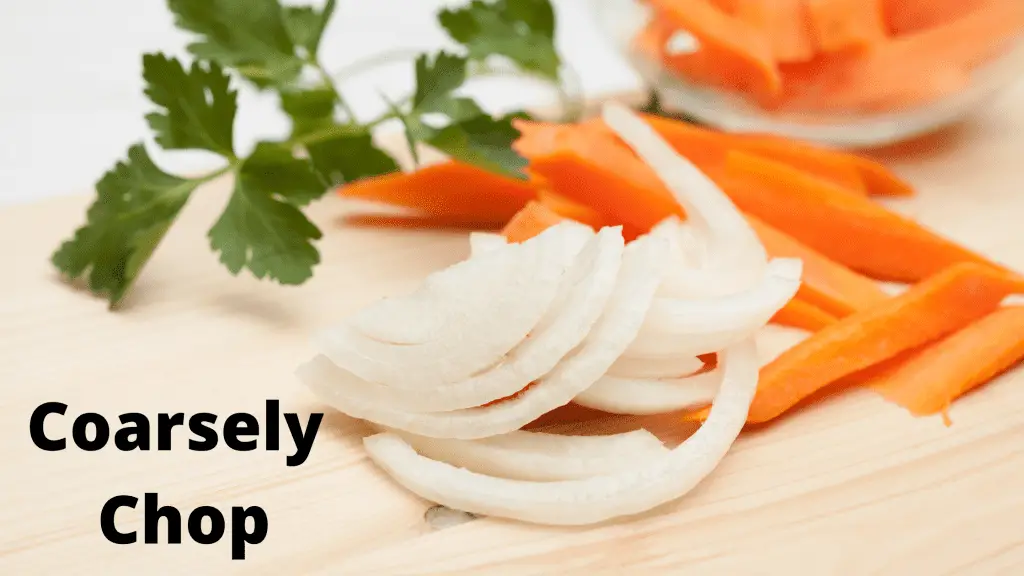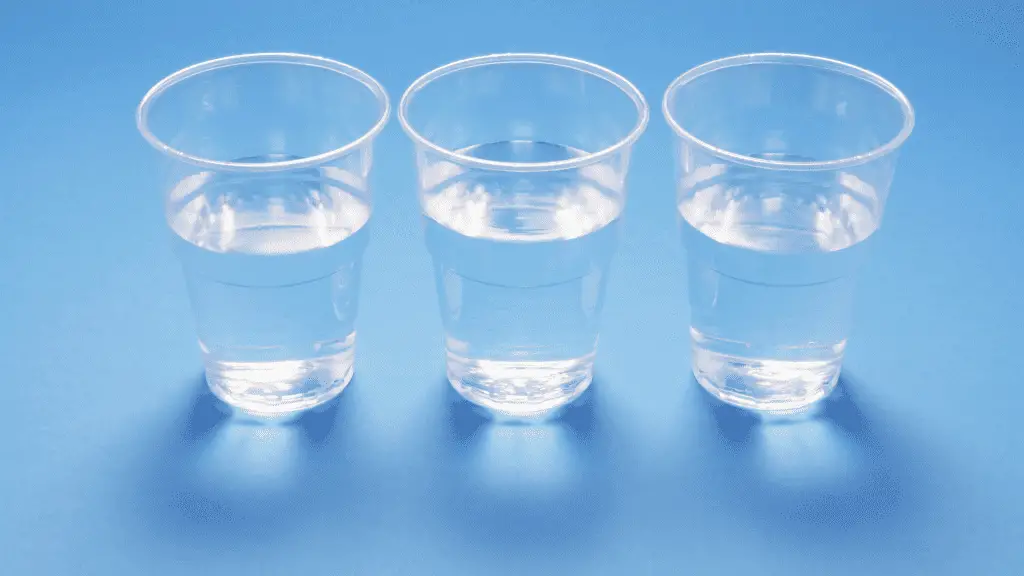When you chop food, you are trying to approach a “bites worth” of food, meaning that it’s not any larger than a piece you could fit into one bite.
A coarse chop is more or less cutting a piece of food into pieces slightly larger than you would for a normal chop. You could think of a coarse chop as being something that needs to be sliced on the plate with a knife, or that you could think of as “a big bite”.
How big is a coarsely chopped piece of food?
It’s hard to give a precise measurement without looking at specific foods, but when you’re rough chopping an ingredient more or less you want to add half again to the size of every cut or slice.
This is in contrast to dicing, which is much more precise – pieces around half the size of a chop, and as uniform as possible. This is because diced food adds texture to your dish, as opposed to individual bites of something.
So, for example:
- If you’re chopping chicken, you should aim for strips of around 0.5 inches in size, and all more or less the same size.
- When roughly chopped, you could expect pieces 0.75 inches in size, not necessarily all the same size, but approximately so.
- When diced, these pieces should be reduced in size to something around 0.25 inches in size.
As mentioned above, another implication of something being “coarsely/roughly chopped”, is that every piece doesn’t need to be precisely the same size, so long as there is some uniformity in the pieces that are produced.
What about chopping leaves?
The above approximation is a good reference for something like a chicken filet, or a hearty vegetable, but in contrast, when you’re chopping leaves (something like spinach, or iceberg lettuce), the size of each segment sliced is going to be smaller.
So when you’re chopping spinach, you can imagine that each “chop” is going to be something like 0.25 inches – add another half again for a rough chop, half it for diced.
Regardless of whether you are chopping meat or vegetables, it is important to have a good knife. This is the knife recommended by chef Anthony Bourdain and it is suitable for coarsely chopping.
How do I roughly chop garlic and ginger?
The rules change again once you get to things like garlic and ginger, but the ratios stay the same. Chopped garlic should look to be about a millimeter thick (although nobody is ever going to measure it!). Minced garlic is the equivalent of dicing, except it becomes so small that it’s almost a paste, that blends seamlessly in with your dish.
Roughly chopped garlic and ginger are simply cut to about one and a half times bigger than you would usually slice them.
If you’re new to cooking be very careful when chopping anything (make sure to keep your fingers parallel to the knife, perpendicular to the chopping board), and even if you’re a relatively experienced cook, take extra care when adjusting sizes to fit to a recipe.
When rough chopping an ingredient that perhaps you usually chop, you need to pay attention because your muscle memory will be telling your hands to do things differently – and when there’s knives involved, it’s time to slow it right down!



